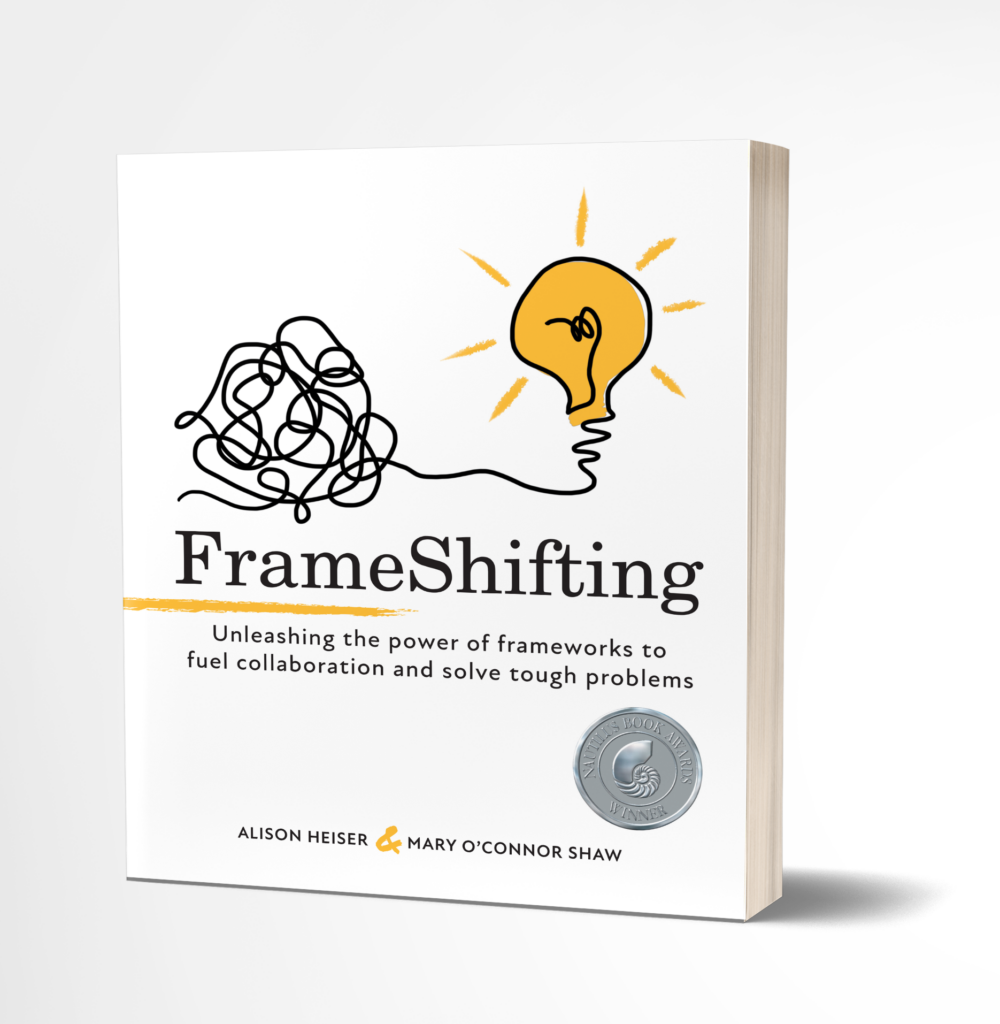Facing complex challenges can put a serious strain on a team. Far too often, a series of seemingly endless meetings leave people frustrated and with little to show for their efforts. But what if there was a proven method for tackling problems that everyone on your team can adopt? A way that leaders, teams, and entrepreneurs could collaborate to drive innovative problem-solving in any organization?
Luckily, there is. It’s called “FrameShifting” and in this episode of Venture unscripted., City Innovations’ CEO, Josh Barker, sat down with Communications Consultant and Co-Author, Mary O’Connor Shaw, to talk about her book, FrameShifting: Unleashing the Power of Frameworks to Solve Tough Problems. Mary also shares some insights on problem framing, the writing process, and words of wisdom for innovators with big dreams.
Dive in by listening to the podcast video below or keep scrolling to read the podcast recap.
How it All Started: The Pro at Personalities
It takes special skills to get along with a lot of different people and personalities. As the oldest of 13 children, Mary is a pro. From a very young age, she’s been able to get people talking positively — it’s her specialty. This has morphed into her day job leading 360 Shaw Communications, a highly specialized communications consulting firm that helps business leaders craft powerful stories.
She recently co-wrote FrameShifting with Alison Heiser, Principal of Alison Heiser Associates, LLC, a strategy and innovation consulting firm that helps clients solve “wicked problems” that require deep thinking and new business models to overcome. Mary and Alison met together years ago when working on a client project.
“It was one of those situations where you meet a kindred spirit and you just hit it off,” Mary explained. “We started talking about what we do and how we do it. And we realized that even though our roles and background are very different, our skill sets were really complimentary.”
Mary and Alison began toying with the idea of codifying what they both do into a language and methodology. Eventually, they landed on “FrameShifting.”
“FrameShifting is a leadership skill that you can learn and you can practice for helping teams collaborate more effectively,” Mary explained. “FrameShifting is a way of understanding how teams solve problems. It’s a unique approach to leading and collaborating with teams through a combination of structure and creativity.”
FrameShifting is not unlike other methods of problem-solving and collaboration, including Design Thinking, Agile, Scrum, and Lean. These are all particularly common in the entrepreneurial area. But they are just tools — if you’re stuck with a problem, how do you know which is the right tool for your team?
“It’s sort of similar to building something. Take a look at the build and see if you need a screwdriver or a hammer,” Mary said. “People know the tools, they learn about them in school but they don’t necessarily learn how to choose the right tool or how to apply it effectively.”
A People-First Approach
Mary and Alison both encountered similar themes over the years. Either the team didn’t know the tools very well or they were using something that didn’t fit — and not seeing solutions as a result.
“It’s more about the people and less about the tool,” Mary explained. “New frameworks come out all the time and some of the older frameworks are seeing a resurgence. They sort of come and go. But personalities and the people involved stay pretty consistent.”
That’s why Mary and Alison explored the concept of Frame Archetypes. “We have noticed in our years, working on teams, there are certain personality types that show up again, and again, and everybody has something important and valuable to offer, but they may have a different approach than the leader of the team is expecting or other people on the team.”
There are four archetypes: FrameBuilder, FrameSeeker, FrameMaster, and FreeRadical. Mary and Alison describe each archetype’s skills, Achilles’ heels, and growth opportunities. By recognizing all their special attributes and how to leverage each, leaders can ensure their entire is engaged and remain motivated to solve the problem.
The Art of FrameShifting
There are certain steps to FrameShifting that help leaders understand the different archetypes, frame the problem, choose the framework, and circle back to check on progress and whether results were seen.
Mary and Alison created a checklist — things to look out for when FrameShifting, like the signs the team is not working well together, how to share a story, how to know when you’re going down the wrong path, or what to do when what you’re doing isn’t working.
Sometimes, you have to shift. That’s what Mary calls it the art of FrameShifting.
The book was born out of commonalities among clients. “Realizing that clients are not aligned, and they never took the time to structure their approach. Everybody assumed that they understood what the problem was and why they were gathered as a team, what the goals and objectives were, but it was never articulated. So we saw these kinds of problems cropping up again, and again, and again.”
FrameShifting ensures teams are solving the right problems. It’s not uncommon for teams to run in the wrong direction. Mary and Alison’s methodology ensures the alignment is right from the beginning and allows for teams to pivot, recheck the problem, and remain motivated.
Bringing the Book to Life
Writing a book was a first for both Mary and Alison. It was a two-year journey to creating the book. They started with the typical conversations that both women have with clients — goals, target audience, and general questions that need to be answered.

“But the other thing that we did that I thought was really, really helpful is we talked about our personal hopes and aspirations for even getting involved in a project like this, because at some point, things are going to get difficult,” Mary explained.
When co-authoring a book there are sure to be disagreements, so Mary and Alison needed to figure out how they were going to work through that. They put their friendship first. “We decided no matter what, we would always make the decisions together, and we would hear each other out and decide the best way forward for the project.”
Mary and Alison laid out all their goals and objectives, created a clear structure for the work, and held each other accountable.
“The other thing I think that helped make us successful is we recognized how far our skills could take us. And then we weren’t afraid to bring other people into the team to help make the project stronger and listened to their advice.”
The Biggest Challenges
One of the biggest challenges in co-authoring FrameShifting was the uncertainty of whether the project would come together fully. Both Mary and Alison had a good understanding of what they would need to do, but “life happens.” Especially when you still have a day job and are trying to complete a project of this scale on the side.
It was also important that Mary and Alison find their niche. After some market research and getting an idea of what kind of business strategy content was already on the shelves, they determined that no one was talking about exactly what they were hoping to do.
“Nobody was telling you how to use those tools and how to know if it’s the right tool for the problem that you’re trying to solve,” Mary explained. “So [FrameShifting] was written like a user’s guide for frameworks and effective team leadership.”
“We wanted you to be able to read it in one sitting. We wanted it to be something that was immediately actionable, that wasn’t really deep in theory, it’s not a textbook, it’s very practical,” Mary said. “We really tried to keep that in mind, based on what we saw was already on bookshelves.”
The Main Takeaway: You Can’t Do Everything On Your Own
The first piece of advice that Mary has for innovators who listened to the podcast or read this recap: “You’ve got to read FrameShifting, that’s just [the] bottom line.”
But once you’ve read it, Mary recommended that you get an accountability partner.
FrameShifting may not have become a reality with the power of teamwork between Mary and Alison, or this project would’ve been very different had they not worked together on it.
“The accountability was really important,” Mary explained. “Also having a sounding board and being able to both sharpen each other. The idea of a lone genius in the garage having a eureka moment all by him or herself feels like a myth way past its sell-by date.”
Problems are much more complex and you can’t always do everything on your own. Having a team, understanding the strengths of those different team members, and how to harness them in ways that ensure everyone does their best work is critical.
What’s Next?
So what’s next for Mary? Working with Alison to get the word out about FrameShifting. They have big plans for future workshops, speaking engagements, conferences, and networking. To learn more about FrameShifting and how you can get a copy, visit www.frameshifting.org.
Check out the full podcast to continue learning more.




